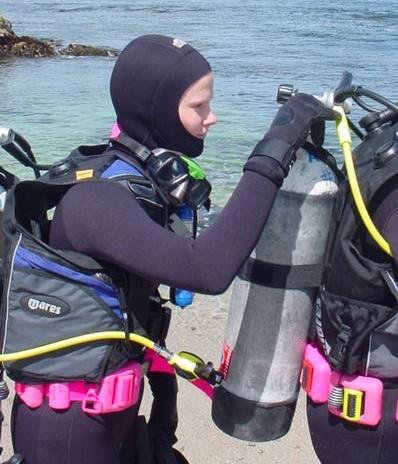Common Misconceptions
Scuba diving is not without risk. However, the fears that most new divers face are based on misconceptions and exaggerations. The following are some common examples.
"Divers are vulnerable to shark attacks"
It's true that sharks have attacked divers, but attacks are rare and the risk is minimal. Most attacks occur at the surface, so you are at a higher risk when swimming or surfing. Most sharks pose no danger to humans, and normally flee the area when they hear your bubbles.

"It's easy to run out of air"
Divers now carry pressure gauges that indicate the remaining pressure inside their cylinders. This allows divers to monitor their air supply during the dive. If you do run out of air, you can breathe from your buddy's air supply by using an alternate air source, which is standard equipment.

"Equipment is prone to failure"
Equipment malfunctions are rare, and most divers will never experience a major failure underwater. The most common malfunctions are minor air leaks, and you'll learn that most of these leaks have minimal impact on your dive.
During your course, you'll learn how to check your gear prior to every dive. Your equipment will also undergo a second inspection by your dive buddy. With the combination of these two inspections, careful divers can identify potential failures before the dive begins. This minimizes the risk of equipment failure.
